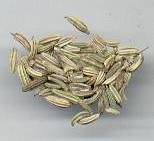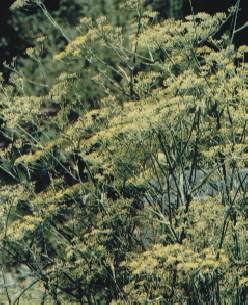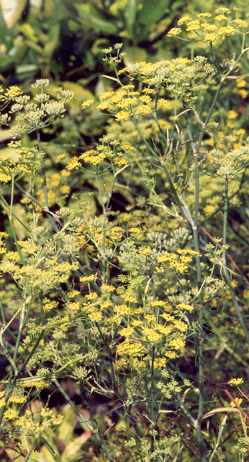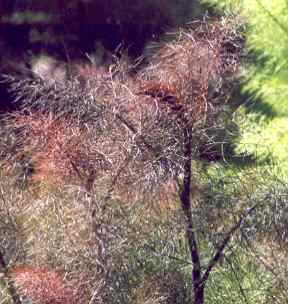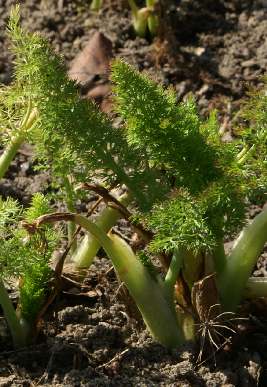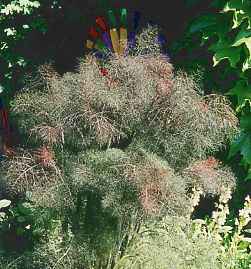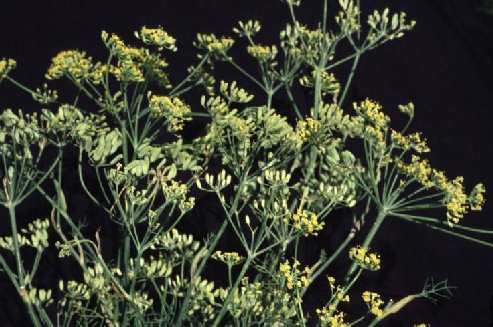
|
| Fennel umbels |
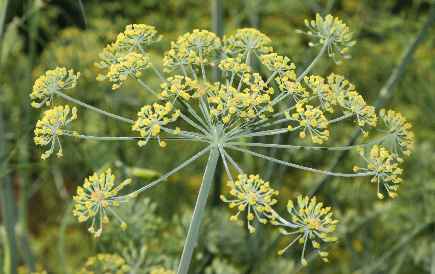
|
| Flowering fennel umbel |
fennel seedsrather inaccurately, are an ancient spice of the Mediterranean, known by the Greeks since three millennia. In the course of time, fennel usage spread both to the East and to the North, which is why fennel is now part of Northern European cookery as well as of East Asian cooking. Quite often, salty foods receive only a small dash of fennel — so small, indeed, that fennel’s importance is easily overlooked.
Being a main component of the Chinese five spice powder (wu xiang fen, see star anise), fennel is firmly rooted in Chinese cuisine, although it is hardly ever used alone, but always as component in spice mixtures. Besides five spice powder, it is often found in spice mixtures employed for long-cooked stews (see black cardamom) or master sauce (see cassia).
Fennel is quite important in several regional cuisines of the Indian subcontinent, particularly in Bengal, where it is part of the typical five-spice-mix panch phoron (see nigella). Fennel usage is, however, not restricted to Bengal: In Kashmir, I once had an excellent duck flavoured with toasted fennel; in Sri Lanka, toasted fennel fruits are one of the typical ingredients responsible for the subtle and complex aroma of fiery and chileladen curries. The toasting procedure not only increases the flavour, but also changes the character of fennel to a more spicy and less sweet impression.
Fennel is much used recipes from Iran, Arabia and the Levant; it is also well
established in Central Europe, chiefly to flavour rye breads, where the
combination of sweet fennel and earthy bread is particularly delightful
(see also blue fenugreek for dark breads);
moreover, fennel is often used for pickled vegetables and herbed vinegar (see
dill). Last but not least, fennel is part of many
sweet pastries. Only in the last application, anise
can be used instead of fennel, although the flavours will differ.

|
| Young fennel umbel |
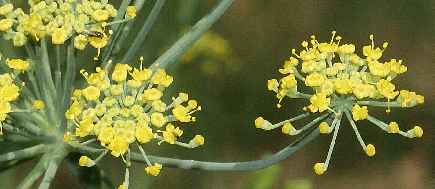
|
| Fennel flowers |
As fennel is native to the Mediterranean, it is most typical for the cuisines of Southern Europe. It is used for meats and poultry, but even more for fish and see food. Fennel is rather popular in Southern France and often contained in the Provençal spice mixture herbes de Provence (see lavender).
Italians are particularly fond of fennel, employing it for many different kinds of foods, e. g., for sausages or pasta sauces. It is often contained, together with herbs (thyme, oregano), in olive oil based marinades for vegetables and, sometimes, sea foods. The marinated vegetables are usually eaten as appetizers (antipasti), together with white bread and red wine.
Fennel pollen has a spicy–ethereal fennel scent that best complements
fruity flavours as found in Italian food, particularly in South Italy.
For example, I like risotto with tomatoes, fennel pollen and
a hint of thyme. Being less robust than fennel
fruits, fennel pollen should be added late in the cooking process, or even
just before serving.

